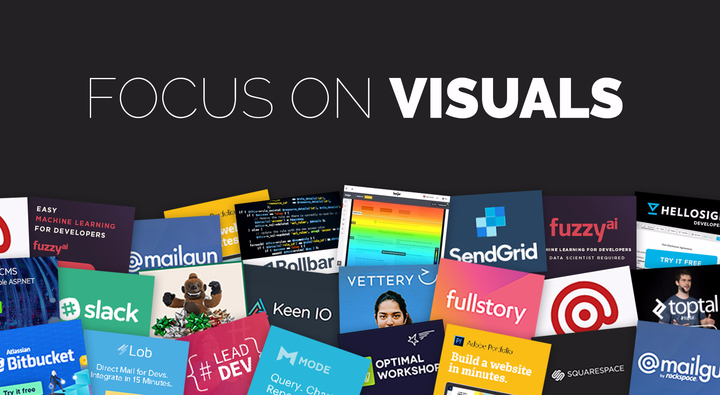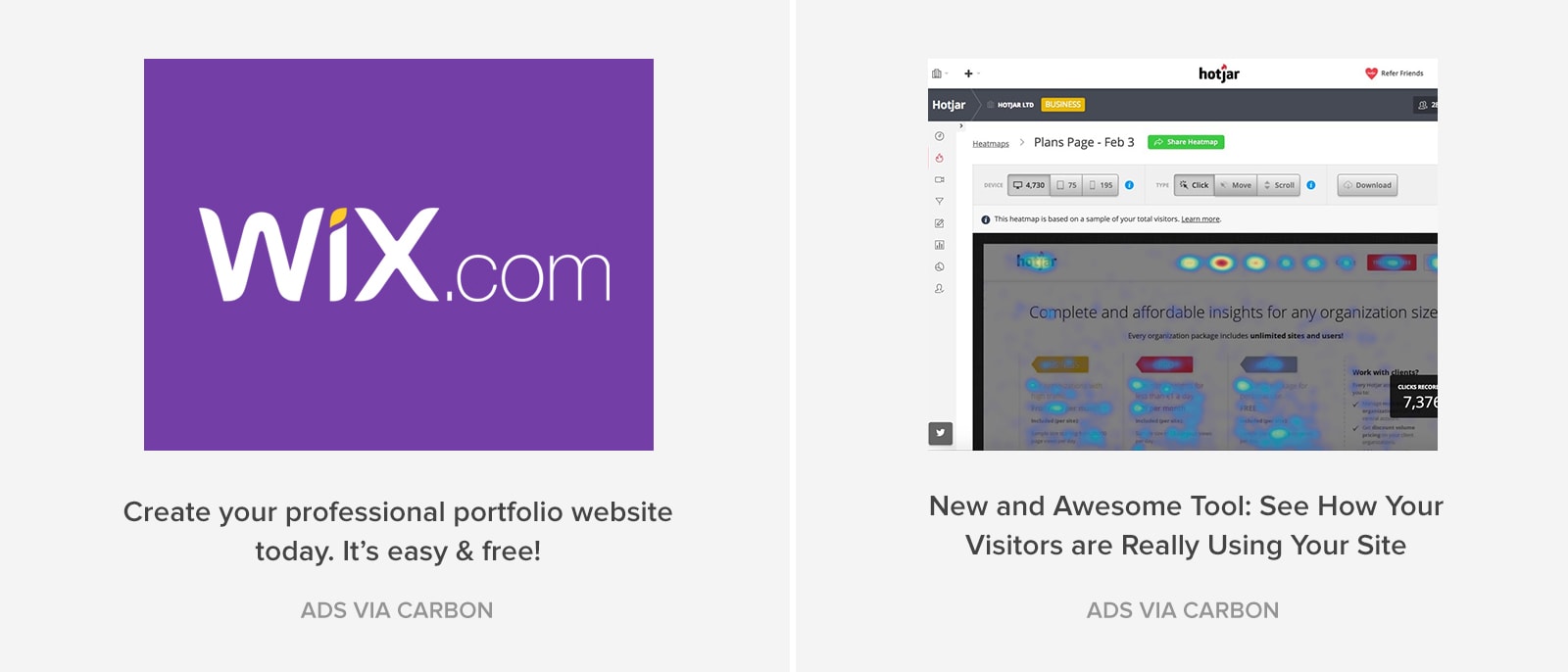Designers hold the keys to the way we interact with the world. This creative group is always looking to improve skills, stay up-to-date on trends, and push the boundaries of design.
This curiosity makes designers open minded to new products or services that help them in their careers. In my experience, marketers can seize this opportunity and profitably acquire designer customers by creating ad campaigns with these four proven practices in mind.
1. Focus on visuals

Designers are visual thinkers, so visual components can make or break campaigns targeted at this audience. Marketers should make sure any images or videos that run as part of a campaign are bold and well designed.
Designers appreciate visuals that reflect current design trends or take progressive approaches to communicating a product. Marketers can visit popular design websites like Dribbble, Type Wolf, or Design Ideas to get inspiration for campaigns. Some current design trends include bright colors, bold typography, and custom iconography.
Designing for designers can be daunting, and it’s common to find that what resonates with designers doesn’t work as well with other groups. For example, this ad for The Reflected Works was clearly created for a designer audience. It uses beautiful typography, breaks the frame, and features a minimal color palette—three subtle on-trend choices that would be missed by general audiences.

2. Speak to specific types of designers
Designer is a catch-all term made up of graphic designers, user experience designers, product designers, web designers, illustrators, and many more.
Adobe aside, most products aren’t relevant to all designers. Marketers should pinpoint which types of designers they want to reach, and then develop a campaign that shows value to this audience on relevant placements.
“Designers are constantly looking for inspiration and resources, which gives marketers lots of opportunity to reach specific communities online,” said Jon Malmberg, Hotjar’s director of demand gen.
“Hotjar gives the user research that’s needed to make data-backed decisions, so reaching UX designers is key for growth,” Malmberg said. “Advertising on UX-focused websites means our marketing can specifically communicate value to UX designers. This makes it easier to outline how feedback like ours can help them make better product decisions.”
These ads from Wix and Hotjar use ad copy to target different types of designers. Wix’s ad is more general, as any designer could benefit from an online portfolio. But Hotjar’s ad is more relevant to UX and web designers who would use a heatmap tool. Both ads show value of a product while targeting different types of designers.

3. Go where designers go
As mentioned previously, designers spend a lot of time looking for inspiration and resources. There are countless advertising opportunities on publisher websites, resource websites, social media sites such as Pinterest and Instagram, podcasts, and newsletters.
It can be tempting to run a programmatic campaign that serves ads to a target audience as it browses millions of websites, design-related or not. But smart marketers will leverage designers’ habits by pursuing advertising opportunities with publishers that provide targeted customers with the inspiration and resources they crave. By doing so, the brand’s ad becomes part of the publisher’s overall content package that designers know and love.
Marketers should also consider running campaigns that reach the design community in multiple ways. For example, Dribbble offers marketers native, newsletter, and podcast opportunities. Communicating a product’s value across multiple placements will help it stick faster.
Marketers can pursue advertising opportunities with individual publishers or opt to run a campaign through a premium ad network such as Carbon Ads. This network serves non-intrusive ads on high-quality publisher websites trusted by the design community. By serving ads on Carbon’s design circle, marketers target designers across more than 100 websites at once.
Struggling to find the right channels? Check out our article on finding emerging placements that reach designers.
4. Don't forget the words
Visuals are important when advertising to designers, but marketers shouldn’t disregard copy when running ad campaigns.
Like any other audience, designers won’t spend precious time decoding a complicated ad. For display or native campaigns, advertisers should keep copy light and simple, serving as an accompaniment to a more interesting or impressive visual piece.
Another way to connect with design communities is through sponsored content, which includes podcast ads, newsletter promos, blog posts, and more. Adobe used sponsored content strategically when it contributed an entire UX channel on The Next Web. Ongoing thought leadership and practical how-to articles gave Adobe countless opportunities to show value, prove expertise, and build trust with designers.
Whether an ad is long or short, the best performing creative communicates human value. Designers are professional problem solvers, so tell them how a product will make their lives easier or make them better at their jobs.
Once the ad copy piques interest, make sure the landing page continues users down the path to conversion. Offer a free trial or show them exactly how a product works—designers are naturally curious but won’t waste time if information is hidden.
Knowing the audience is key
Designers are creative learners who spend many hours crawling the internet for inspiration, resources, and ideas. When creating campaigns targeted at designers, it’s important to focus on visuals, talk to a niche group when necessary, partner with trusted publishers, and be clear in how a product solves problems.
Marketers who design campaigns around these practices can acquire new customers profitably and benefit from the trust halo that premium design websites provide.
Ready to acquire customers from the design community? Reach out today.


